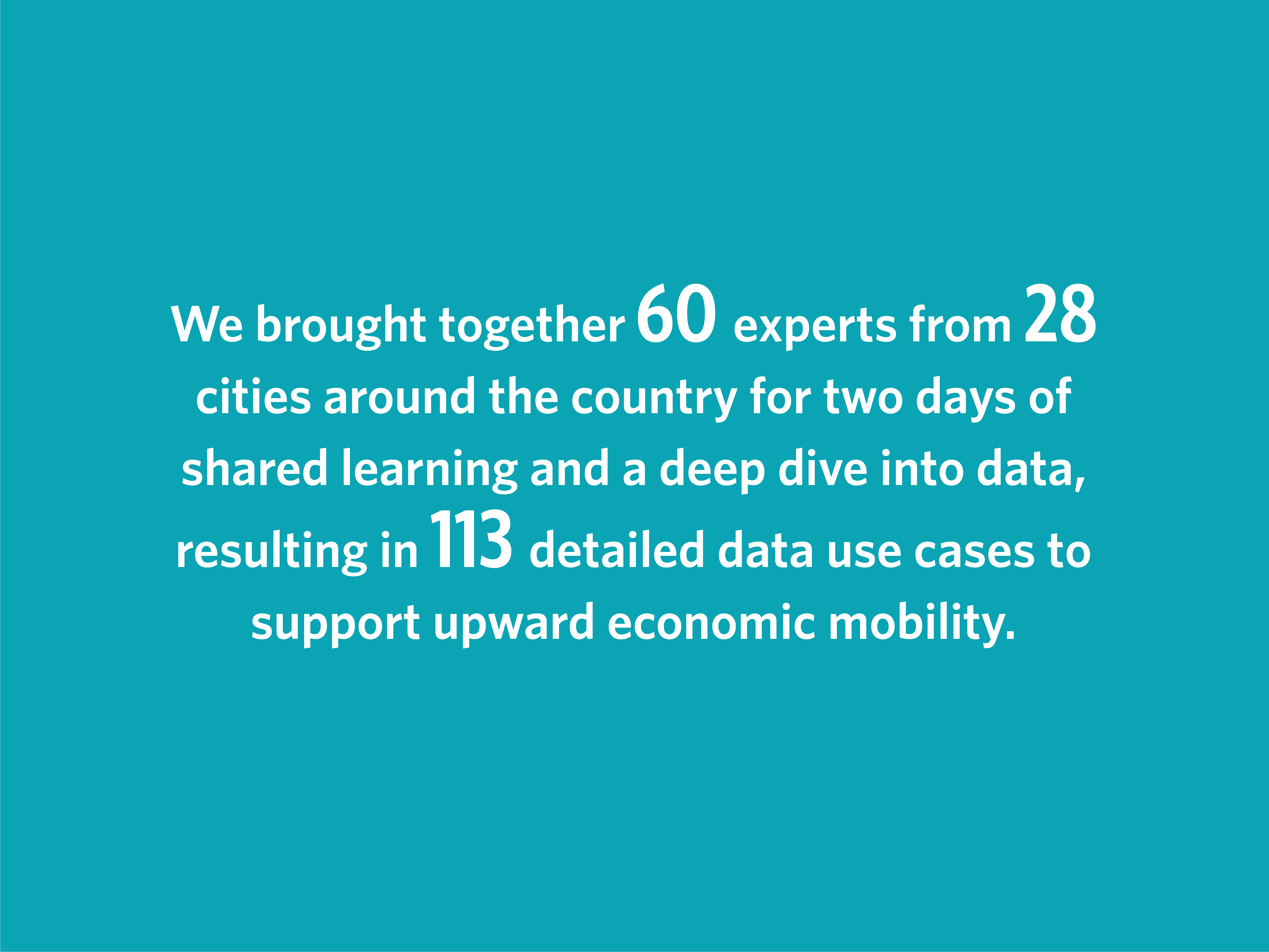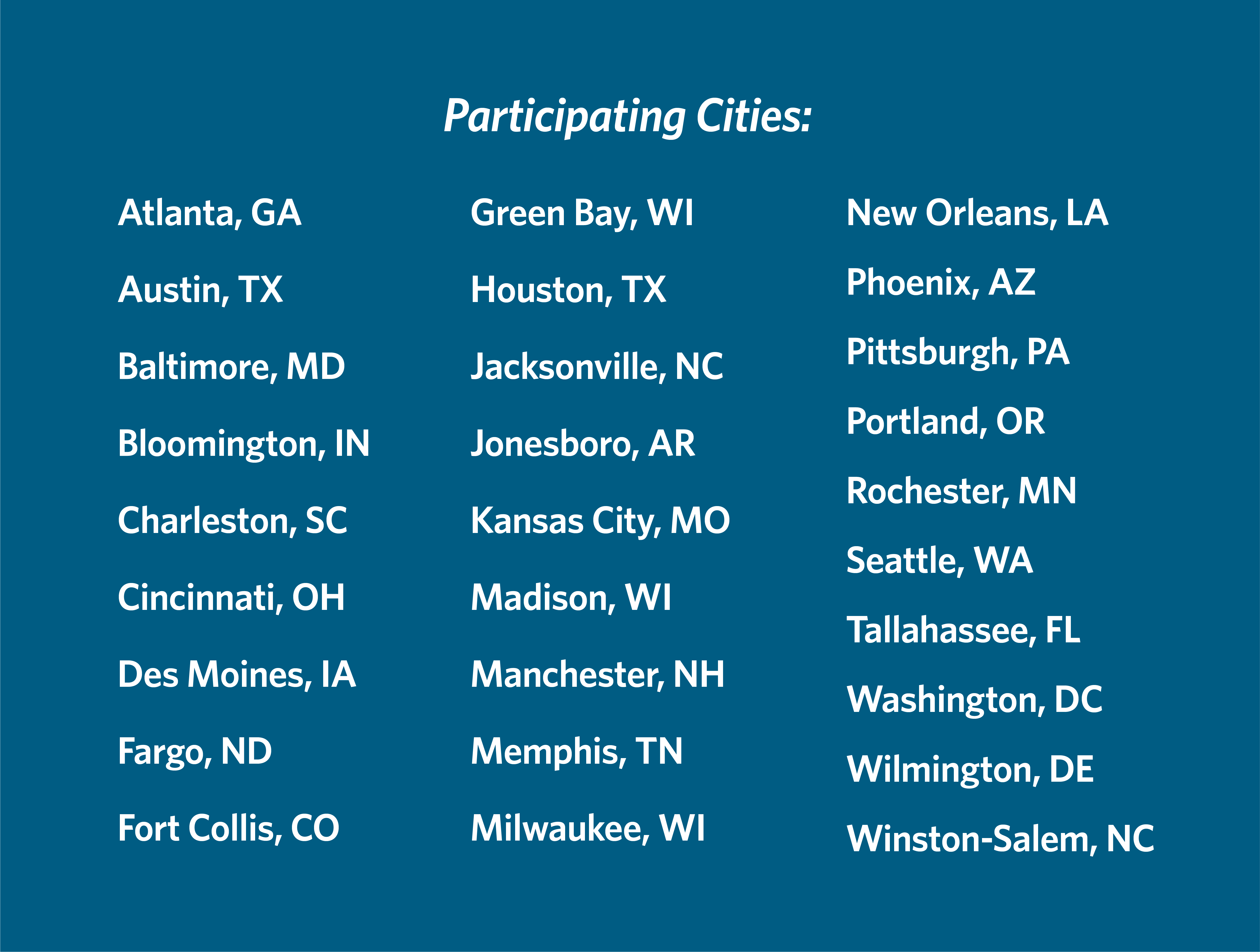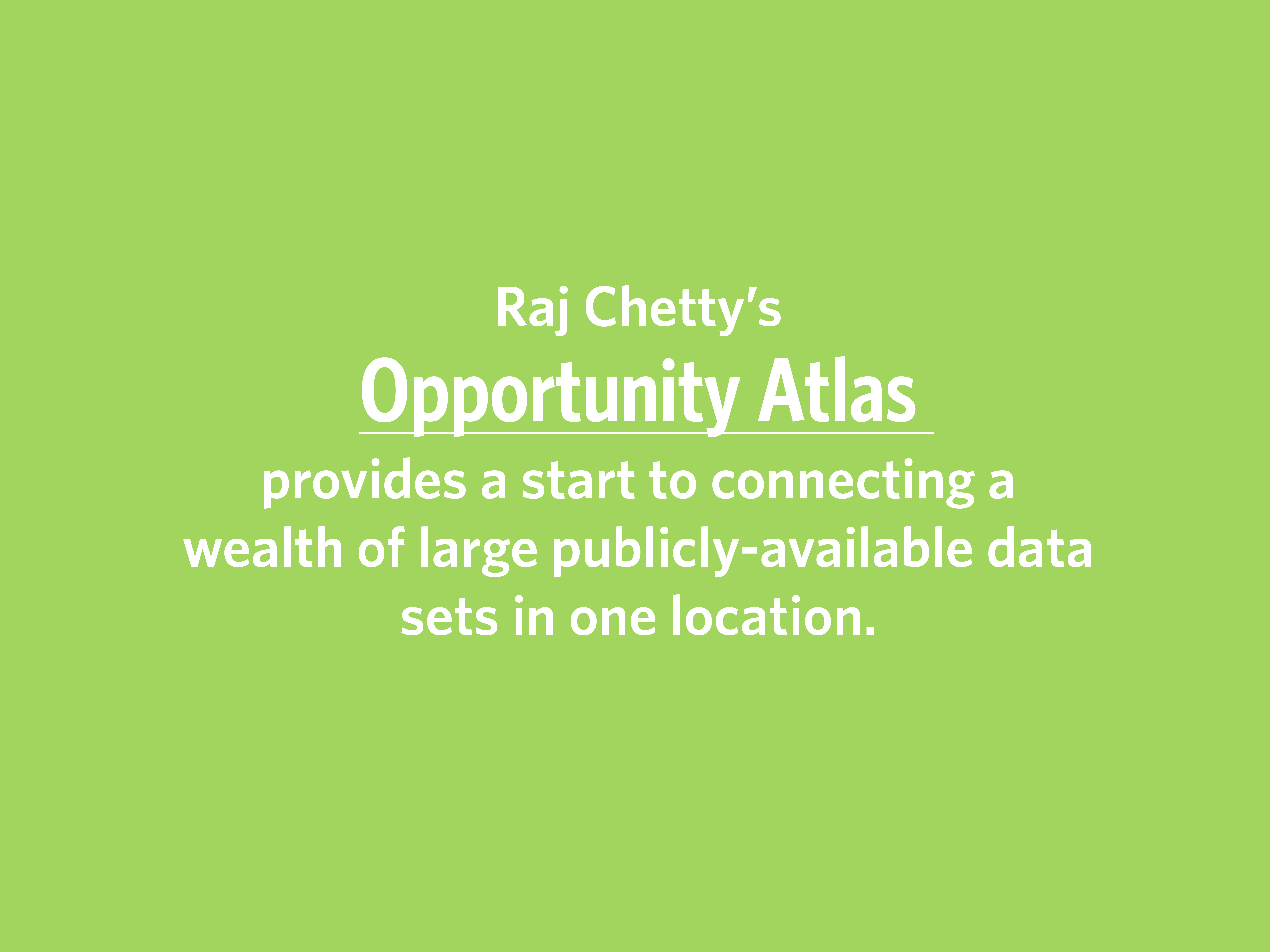Connecting Data to Support Economic Mobility
PARTNER: Gov Ex
SERVICE AREA: Economic Mobility
LOCATION: National
TIMEFRAME: January – April 2019
The Challenge
Many factors contribute to individual and community downward or stalled economic mobility, and it is widely agreed that achieving upward economic mobility requires the alignment of resources and programmatic supports across multiple agencies in multiple fields and at multiple levels of government. Greater access to data from a wide variety of sources can greatly enhance these multi-government agency efforts to triangulate policies and resources. There are data elements collected at all levels of government that could be better connected so that decision makers can access a fuller data picture.
The Solution
UPD designed and facilitated a two-day convening in Baltimore with city and county experts in workforce development, housing, economic development, health, education, and human services to discuss the economic mobility questions they could answer if they could connect to more and better sets of data. These questions were then developed into data use cases which chart:
- Who are the decision makers who need these data to make a decision?
- What specific data elements do decision makers need to answer the question?
- Why do we need to answer the question?
- What are the potential barriers to accessing those data?
This method of use case development is intended to connect the data needs to the reasons for including those data, ensuring that the efforts spent building technology and processes from these use cases will represent the highest priority and most essential data. Facilitators spent hours diving into the value of those data collections, both to clarify the true questions that cities and counties want to answer and to then more concretely identify the data most needed and best suited to answer those refined questions. It was two days filled with shared learning, a continual push toward innovation, and grappling with which questions matter most in the economic mobility space.
The Data Use Case
The purpose of the data use case is to clarify and align as a team on what questions you actually want to answer using data, which data need to be collected to get you to your answer, and how you will use those data together. Without clear data use cases, we risk collecting too much data or the wrong data, and doing so without a clear sense of purpose and priorities for those efforts.
The Impact
The convening resulted in 113 detailed data use cases. But more importantly, it ignited deep reflection on the government’s practices around economic mobility and laid the foundation for future conversations on how governments can better connect disparate data sources to support their residents’ income and wealth mobility.
Highlights
- Workforce agencies would like to align their workforce training and education efforts better with upcoming city, county, state, and private sector investments that will bring new jobs by connecting to government capital and other budget data, economic development agency investment data, and Security Exchange Commission 10K reports.
- Housing departments would like better, more up-to-date data on market rental rates by neighborhood or even by block to more efficiently allocate valuable but scarce development subsidies for affordable housing. Rather than using annual citywide rental rates, tapping into online real estate rental tools that are updated constantly could significantly improve the targeting of public resources.
- Health and human service staff would like to use data to collaborate better with emergency responders to prevent emergency dispatches for chronic medical issues that could be solved through preventative medical care (i.e., asthma attack prevention). By sharing emergency (911) call data, health and human services staff can identify and work to support individuals and neighborhoods experiencing high numbers of emergency health calls from preventable causes.
- Education, post-secondary education institutions, and workforce agencies would like to work together to understand where students go after high school graduation to improve the connections between high school and college, credentialing programs, and apprenticeship placements, as well as the persistence and success of those students in those post-secondary placements. They need to connect the high school graduation data with placements in programs across the region (and beyond, if possible) to understand those placements better.
- Aggressive code enforcement can be an effective tool in blight prevention, particularly in cities with large numbers of rental properties and a high frequency of turnover of rental property owners. Code enforcement agencies would like to be able to track past and current code enforcement action to ownership patterns to potentially modulate code enforcement activity based on the prior track record of owners.


